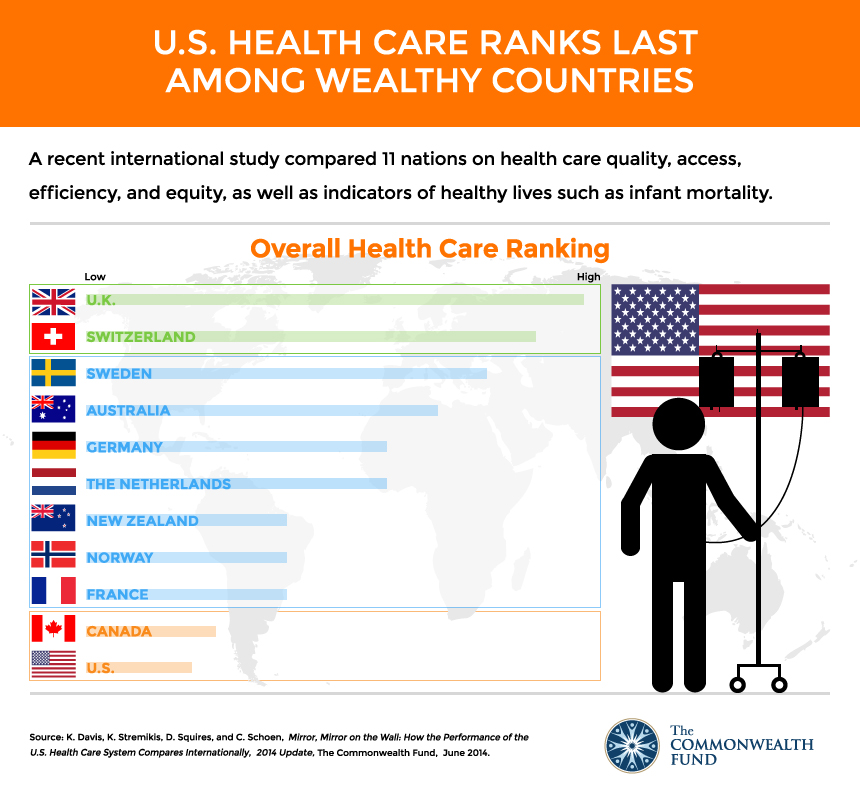

Mental health practitioners find that memory problems and other needs are only the beginning of the process in making a diagnosis. The doctor is required to check in what ways an individual is not functioning as they would expect. Assessments may be carried out at home in order to gain a clearer image of how the client is managing (Ramsay et al, 2005). The doctor will also need to know the client’s medical history including any physical illness and current medication. The doctor will also want to rule out depression as a cause of the memory problems. If the memory problems are attributed to depression, then treatment using an antidepressant could help substantially (Ramsay et al, 2005). Diagnosis is a scientific tool. Beyond that the carer requires an understanding of the client’s experience of having a problem or disorder, health and social care needs to be values based as well as evidence based. To translate this philosophy into practice requires that the assessment process be driven by the principles of partnership, holism and personalisation (Atkins et al, 2004). Assessment is a valid and integral part of any nursing intervention and must be performed in partnership with the client (RCN, 2004).
Following this, the next step is to consider involvement of various investigations, often carried out in hospital or in a clinic, including the use of blood testing, X-ray and if necessary, brain scanning to discover the cause of the symptoms (Ramsay et al, 2005).
To carry out a full assessment of the client’s problems, other practitioners are likely to play a part in the assessment as part of a multi-disciplinary team (MDT). Members of the team may include nurses, occupational therapists, psychologists, physiotherapists, social workers and doctors. Making a diagnosis is important as diagnosis affects the type of treatment used (Ramsay et al, 2005)
Difficulties that can occur in practice when attempting to engage with clients in an effective manner include; making all of the information that is being exchanged comprehensible to the client, finding methods to reduce frequency of forgetting that can occur, finding methods to encourage clients to feedback information – positive or negative to overcome any difficulties that many people can feel in clinical settings (Ley, 1997).
The reflective account outlines the importance of communication skills in practice where the nurse can be delivering care to individuals with very specific needs that must be attended to with privacy, comfort and dignity for the health and wellbeing of the patient. In the account it is clear that clients with dementia can find communication, mobility, and physical health problems difficult and in managing the care of clients with dementia although challenging, may be overcome through empathic understanding and best practice including evidence based care delivery. In relation to communication, the most suitable approach is the use of selective questioning, providing information, respecting personal dignity and being clear so that the client understands (Zimmermann, 1998).
Patient centred methods of care place demands on nurses because such a method involves responding to the cues from clients in which feelings and emotions are expressed. Nurses are required to develop the expertise to respond in an appropriate manner to the client’s feelings and emotions (Stewart et al, 1989). In order to provide high quality person centred care, the needs of each patient must be assessed individually to ascertain additional requirements that the client may have. Conversely, some clients will require less assistance than initially considered by the team. It is equally important to understand these needs in order to respect each client’s need for independence (Stewart et al, 1989). Best care can be defined by the underlying principles that communication should always be person centred (Oberg, 2003). Therefore the client should be provided with a quality standard of care that allows a sense of control over the treatment that is being provided. It is vital that the client is involved in their own care and treatment, not only does this maintain the comfort and dignity of the person, but prevents errors and miscommunication leading to an effective client/nurse relationship. In one study findings concluded that actively involving the patient in aspects of care and treatment often leads to earlier recovery and an improved quality of life (Stewart et al, 1989).
Overview of Care Practice – Reflection in Action

The assessment phase of the nursing process is fundamental at this stage of the interaction so that the nurse was able to ascertain if the client required the use of the toilet (Kozier, 2004). The nurse asked the client if he needed to use the toilet. The client responded by nodding his head and saying “yes”. The planning phase of the nursing process is equally important at this stage. The nurse informed the client that he would show him the way and escorted the client to the toilet. When speaking to the client the nurse was careful to maintain eye-contact and speak slowly and calmly to ensure that the client would understand. Whilst being escorted the client explained that he had been incontinent of faeces. The client began apologising but the nurse reassured him and explained that he would get him some fresh clothes (Johns, 2000; Schön, 1983; 1987).
The nurse was able to provide comfort and maintain the dignity of the client as well as the client’s confidence in the nurse’s abilities. The client was reassured and an explanation of the procedure was provided to the person in a step-by-step process, asked if he understood and if he was agreeable. The client confirmed he was agreeable and began to converse with the nurse and appeared much more relaxed. The client responded with additional banter and appeared more content. The client was able to carry out more intimate aspects of his personal cleansing so that further consideration to preserving his dignity and independence was maximised. The nurse recommended that the client’s catheter bag was emptied on a more regular basis to aid comfort and reduce distress (Johns, 2000; Schön, 1983; 1987). The NMC (2008) guidelines stipulate that nurses maintain the respect, dignity and comfort of clients. After being washed the client was assisted with putting on clothing, explaining each step slowly, the client responded y following each step and no longer appeared agitated and was returned to the lounge in a wheelchair. The student reported the information to the rest of the team and discussed regular catheter care for the client.
Reflection on Action

Those who experience dementia may find some tasks increasingly difficult such as everyday tasks of living, including washing and dressing without assistance or with finding the right words when talking. Interaction for the person can become increasingly difficult and distressing for the client in their relationship with others (Ramsay et al, 2005). Dementia care practice provides opportunities to mental health nurses on how to engage effectively with clients.
During the initial contact stages of any nurse and client interaction it is important that the nurse keeps the environment simplified and to eliminate noise that can distract the client (Zimmermann, 1998). It is useful if the nursing team minimises activity occurring in a shift change because a confused client may misunderstand nurses saying goodbye to each another and may wish to leave. Approaching the client slowly and making eye contact can reduce any risk of alarming the client (Zimmermann, 1998). Also the nurse should speak slowly and calmly with pauses so that the client responds to the content of the communication and not the mannerisms of the nurse (Zimmermann, 1998). These skills may help to reduce the client’s anxiety and confusion.
The National Service Framework (NSF) for older people sets out national standards and service models of health/social care that older people using mental health services can expect to receive, whether they are living at home, in care or are in hospital (DH, 2001; WAG, 2006). Older people are generally referred to as anyone aged sixty and over and the national ten year initiative is to ensure better health and social care services for people meeting the criteria. It includes older people with dementia, carers and ethnic minority groups. In addition, age discrimination and patient-centred care have been identified as two key areas. Including the NSF, there have been a number of campaigns to promote dignity in the care of older people, recognising that standards of care in some cases are poor and inadequate (DH, 2006a).
Unfortunately, there has been a lack of clarity associated with the notion of dignity and the appropriate minimum standards and/or recommendations that should be applied. For example, in an attempt to address the concerns of dignity the Department of Health published an online public survey around the views of dignity and care provision (DH, 2006a). Results of the survey reported that a many aspects of care were identified by older people as vital in maintaining dignity, such as respecting the person and communicating effectively.
The Lets Make It Happen NSF (2002) outlines eight standards of care that address issues such as age discrimination, person centred care, mental health and the promotion of health and active life in old age. The success of the NSF for Older People depends on how well it is being implemented. Lets Make It Happen follows the NSF for Older People in 2001 and focuses on examples of research and good practice through evidence based care provision, which demonstrates how implementing good practice can improve people’s quality of life and should also help to develop ideas for how the NSF might be implemented (Alzheimer’s Society, 2002).
In 2006, the Department of Health released a report: ‘A New Ambition for Old Age’, in an attempt to move the requirements outlined in the National Service Framework forward, and offers details of the next stage of healthcare reforms for older people. This documentation places older peoples’ needs as integral to care planning and delivery, with ‘respect’ and the maintenance of ‘dignity’ by recognising the existing issues around health related age discrimination (Department of Health 2006b). Furthermore, the Department of Health have established a set of benchmarking tools to ‘root out age discrimination’ and to ‘advance person-centred care’ (Department of Health 2007a). This is to be achieved, in the first place, by actively ‘listening to the views of users and carers about the services they need and want’ (Department of Health 2007a).
Within Wales the Care Programme Approach (CPA) is highly regarded as the cornerstone of the Government’s mental health policy and procedures. The framework was introduced in 2004 for the care of people with mental health issues who are accepted as clients by mental health services in an inpatient or community setting. All NHS Trusts in Wales participated in a review and all had processes in place to deliver CPA to clients (Elias & Singer, 2009). Although the review sample was small, findings were consistent across all the organisations, and demonstrated that CPA had not been implemented as effectively as it should. If this randomly selected sample is representative of all mental health services in Wales, there is a risk that services are failing clients and carers due to a lack of adequate risk management processes, a lack of focus on the outcome of patient interventions, and a lack of service planning and service models to safely and adequately meet client’s needs. Greater focus is needed on the assessment and management of risk (Elias & Singer, 2009).
Practitioners must be prepared and fully trained to fulfil the role of care co-ordinator. Information systems need to meet client needs rather than organisational priorities. The current system is very complex and bureaucratic particularly where CPA and the Unified Assessment (UA) have been integrated into a single process. A record management system needs to be developed that supports CPA and UA whilst also providing the least administrative burden for clinicians and practitioners (Elias & Singer, 2009).
A significant amount of evidence exists suggesting that providing care for a person with dementia is not only stressful, but can also have a negative impact on the carer’s mental health (Cooper et al, 1995). Recently, government policy has expressed the importance of offering support to carers. This has been highlighted by the Audit Commission report examining mental health services for older people (2000).
Research suggests that carer’s needs are multifaceted, and that support is needed at times of transition, for example diagnosis, admission of the person they are caring for to residential care and the death of the person with dementia. (Aneshensel et al, 1995). The need for more advanced training in the field of dementia care has been recognised for quite some time (Keady et al, 2003). NICE and the Social Care Institute for Excellence (SCIE) recently developed guidelines for supporting people with dementia and their carers (NICE & SCIE, 2007). The guidelines identified the main therapeutic interventions and when and why they should be used. The principal focus of care should involve maximising independent living skills and enhancing client function. This will involve assisting client’s to adapt and develop their skills to minimise the need for support (NICE & SCIE, 2007).
This should start in the early stages of the condition, and could involve a number of services and the client’s carers. Providing care in ways that promote independence is liable to take time, but it is the core intervention for people with dementia on a therapeutic basis. The NICE and SCIE (2006) guideline identified key interventions that should be utilized for maximising function. Care plans are vitally important and should include the activities that are important for maintaining independence. Care plans should take account of the individual’s type of dementia, their needs, interests, preferences and life histories (NICE & SCIE, 2006). Obtaining advice about client’s independent toilet skills is important. If the client experiences episodes of incontinence, any possible causes should be assessed and then treatment options tried before the team concludes that incontinence is permanent. Physical exercise should be encouraged when possible and facilitated in a safe environment, with assessment advice from a physiotherapist when required. As exercise is thought to help improve continence problems, loss of mobility and improve endurance, physical strength and balance in falls prevention (NICE, 2004) physical exercise should be promoted by all staff.
Therapeutic interventions for the cognitive symptoms of dementia are comprised of psychological and pharmacological treatments. However, providing supportive levels of care that encourage clients to maintain as much of their independent functions as possible is equally as important as any specific interventions for the cognitive symptoms of dementia (NICE, 2007; Moniz-Cook & Manthorpe, 2009).
Much has been written about medical and social models of dementia, some of which has implied that there are a number of different ways of looking at dementia, one as a disease model and one as a disability. Some of these differences are described in Tom Kitwood’s Dementia Reconsidered (Kitwood, 1999). Kitwood described the medical model as the ‘standard paradigm’, and argues eloquently that it is the wrong model to use. Dementia is an illness that causes a progressive decline in cognitive abilities and there are demonstrable changes to the brain. It is, however very important to remember that we are treating a person with dementia. How the condition presents depends on the clients’ personality, their relationships with others, and who they are as a person (Kitwood, 1999).
Nurses and GPs have cited inadequate professional training as one of the main factors influencing their ability to provide an optimal service to people with dementia (Iliffe & Drennan, 2001; Alzheimer’s Society, 1995). However, it is not known what method of training would equip them with the right range of knowledge and skills. Around 700,000 people in the UK have dementia, and this number is predicted to double to 1.4 million over the next 30 years (DH, 2009).
Conclusion
In summary, dementia is a debilitating disorder that is having a massive impact on mental health services. The introduction of numerous frameworks for the care of the older adult and other policy documents have set the standards expected of mental health professionals and backs up evidence based care with a high standard of principals and values (RCN, 2004; DH, 2009,). The number of people being diagnosed with a dementia is increasing, and although difficult to manage, through continued research, development and training of staff and practicing with empathy, treating clients with dignity and respect and upholding the core values of the nursing profession (NMC, 2008) dementia care services and service providers may transcend the potential difficulties that lay ahead. In these uncertain times it is comforting that the care of the older adult has not been forgotten.
Read Also: Cultural Difference Between the US And China Marketing Essay

 As an English major at one of the top universities for the fine subject, I’ve cranked out my fair share of essays. Needless to say, I’ve experienced the entire gamut of
As an English major at one of the top universities for the fine subject, I’ve cranked out my fair share of essays. Needless to say, I’ve experienced the entire gamut of 



 The economic advantages and disadvantages of the UK system
The economic advantages and disadvantages of the UK system

 Customer satisfaction is an essential element in any given business enterprise and the medical sector is no exception. Although the fate of undergoing pain during delivery is inevitable for expectant women, reducing such pain to the lowest possible levels increases the satisfaction of patients. Hawkins (2010) reported that psychological stress or pain could increase maternal plasma levels of epinephrine by 25% and decreased uterine blood flow by 50% which may in turn prolong the period of labor.
Customer satisfaction is an essential element in any given business enterprise and the medical sector is no exception. Although the fate of undergoing pain during delivery is inevitable for expectant women, reducing such pain to the lowest possible levels increases the satisfaction of patients. Hawkins (2010) reported that psychological stress or pain could increase maternal plasma levels of epinephrine by 25% and decreased uterine blood flow by 50% which may in turn prolong the period of labor.
 On the other hand a
On the other hand a 
You must be logged in to post a comment.